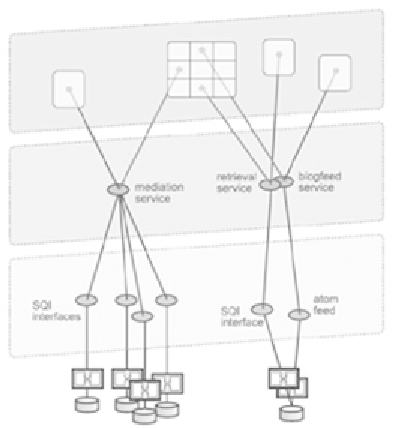Information Technology Reference
In-Depth Information
Figure 2. Layered architecture of a mash-up PLE
Figure 3 the prototype therefore displays a learn-
ing activity in the form of a page that forms the
central user interface to the digitally accessible
personal learning environment parts. At the top,
the type (activity or activity pattern) and the title
of the page are presented. To the left, all activities
of a user are listed. Clicking on an activity folds
out the list of its actions and loads it into the
content area. Below there are various functions
for creating new activities (blank or from a pre-
defined pattern), deriving new patterns from the
current activity, or starting a new action. For
designing the activity, MUPPLE supports the
learner through recommending action-object-tool
triples.
Below the surface, we have equipped MUPPLE
with a domain-specific scripting language spe-
cifically developed for learning environment
design - the so-called learner interaction scripting
language (LISL) introduced in Mödritscher et al.
(2008b). Within the tab 'log' (see Figure 3), the
content area displays the materialization of the
proposed approach for mash-up personal learning
environments enables the design of learning en-
vironments and supports building and sustaining
networked learning communities. As shown in
Figure 3. MUPPLE page for an activity 'Getting to Know Each Other'


Search WWH ::

Custom Search